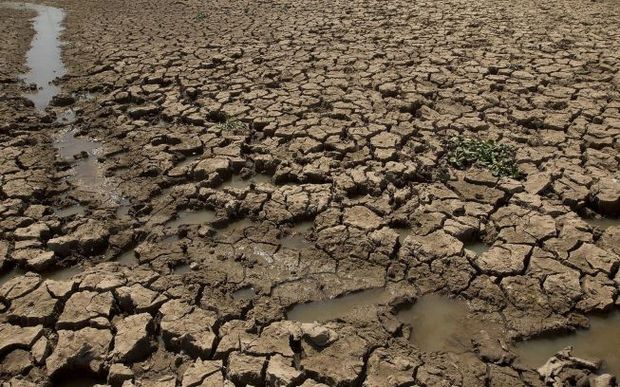
At least four million people in the Pacific face hunger, water shortages and risk of disease this year and next due to droughts and erratic rains, influenced by climate change and the likely development of a ‘super El Niño’.
In Entering Uncharted Waters: El Niño and the threat to food security, Oxfam reports that Pacific island nations say they are already suffering from more frequent and destructive storms, exacerbated by rising sea levels as a result of long-term climate change, citing Cyclone Pam, which smashed through Vanuatu in March 2015, and the devastating flooding in Kiribati the previous month.
World leaders are set to meet in Paris in December to negotiate a universal and legally-binding UN climate agreement. Oxfam is warning that climate chaos could increase humanitarian emergencies at a time when resources and capacity are already under enormous strain.
Scientists say climate change could double the frequency of ‘super El Niños’. It is a natural phenomenon, occurring every 7 or 8 years, when a huge release of heat from the oceans into the atmosphere influences global weather patterns.
In the Pacific, the 1997–1998 El Niño caused severe drought, major crop losses and severe hardship in Micronesia, Fiji, the Marshall Islands, Samoa, Tonga and elsewhere, and governments and agencies in these Pacific nations are now preparing for similar events.
Jason Myers, Oxfam New Zealand’s Advocacy and Campaigns Director, said: “Millions of people are already feeling the effects of this super El Niño, seeing their crops fail and the price of staple foods increase because of shortages.
“Such extreme weather events are only going to increase as climate change ramps up. 2014 was the hottest year on record and this year looks set to exceed it.
“Governments are waking up to the fact that climate change is already happening and there is an urgent need for a global deal to tackle it.”
The effects of record high temperatures and the ‘super El Niño’ are already being felt:
• Papua New Guinea has been hit by torrential rains that caused landslides, then drought and severe heat that withered crops, affecting 2 million people
• Tonga, Samoa, Fiji and the Solomon Islands are experiencing reduced rainfall, affecting crops and water supplies. Conditions are likely to get drier from now on, with some eventually slipping into drought, increasing the risk of water-borne diseases like diarrhoea and typhoid.
• Countries near the equator like Kiribati and Tuvalu can expect more rain, flooding and higher sea levels, presenting challenges for the low-lying atolls already feeling the impacts of climate change.
• Drought conditions would further complicate the humanitarian situation in Vanuatu, which is just emerging from the devastation caused by Tropical Cyclone Pam
• Meteorologists are reporting strong storms and predicting drought in the Marshall Islands
Esmie Sinapa, Oxfam in Papua New Guinea Country Director, said: “We’re getting reports that current food supplies may only last another month in some districts.
“Schools have reduced their hours to half days, as it gets too hot for the students and there’s not enough water.”
Oxfam is preparing a humanitarian response in PNG and Tonga.
“We have water equipment ready to distribute in PNG and Tonga and we’re working closely with authorities in both countries. We have health promotion programmes in place to minimise the risk of waterborne disease and are helping communities prepare for drought by providing water saving advice and drought-resistant crops”.
The pattern of El Niños is getting harder to predict. With ongoing climate change, 2014 was the hottest year on record. No El Niño developed then but growing seasons in Southern Africa and Central America behaved as if one were occurring. Temperatures continued to soar this year and some scientists are expecting it to be the most powerful El Niño to date.
